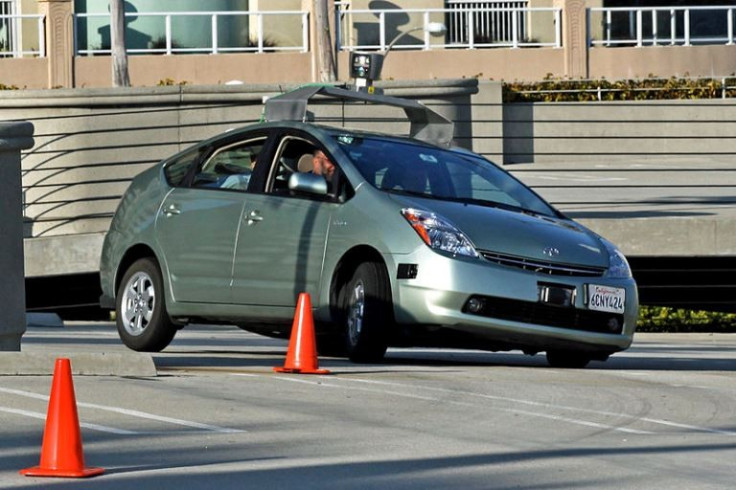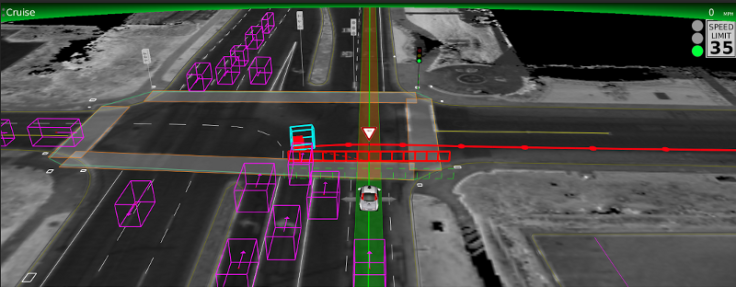Google driverless car accidents may not be its fault but convincing the public will be tough

A fleet of 23 autonomous Lexus SUVs. 1.7 million miles. Six years. And 11 accidents.
That, in a nutshell, is Google's driverless car experiment which the company has been running on the roads of California since 2009. The final figure of course is the one which has grabbed all the headlines, but according to Google, none of them were its fault.
The 11 accidents that Google's autonomous fleet of cars have been involved in are described as "light damage, no injuries". Crucially, Google claims that not a single one of those 11 accidents was caused by its autonomous vehicles.
Seven of the 11 crashes were the result of drivers crashing into the back of one of Google's cars, six of which happened at red lights and one on the freeway. Two of the accidents have seen Google's cars side-swiped and once a car was hit by a driver rolling through a stop sign. Google has not revealed how the final accident happened.
Eight of the accidents happened while driving in the city despite this type of driving accounting for a minority of the total miles driven by the autonomous fleet.
Chris Urmson, the director of Google's self-driving car program, published a detailed blog about the safety record of its driverless cars in response to a report from AP suggesting the cars were involved in four accidents since last September.
Trust, not technology is the key
Clearly that is not a headline anyone at Google, or in the wider car industry, wants to have at the front of people's minds when they think about autonomous vehicles. With everyone in the car industry – and beyond – looking into the potential for driverless cars, one of the major stumbling blocks for overcoming their adoption is not technology, but trust.
Google points out that one of the biggest problems with dealing with accidents such as the ones it has been involved in over the last six years, is that there are no hard statistics available as most of these minor bumps don't get reported (up to 55% according to the National Highway Traffic Safety Administration).
Google says that its fleet of cars are currently clocking up over 10,000 self-driven miles per week – which is slightly less than an average US driver clocks up over the course of a year. This driving is being done mostly on city streets and is allowing Google to collect an unrivaled set of data on driving behaviour which has never been captured before.
"Not only are we developing a good understanding of minor accident rates on suburban streets, we've also identified patterns of driver behaviour (lane-drifting, red-light running) that are leading indicators of significant collisions. Those behaviors don't ever show up in official statistics, but they create dangerous situations for everyone around them," Urmson said.
A recent study found that in the US, 88% of drivers would be worried about riding in a driverless car, and it is overcoming this fear which will be the biggest challenge in getting autonomous vehicles on the road. In the UK the situation is even more challenging. A study commissioned by Churchill Insurance found that only 8% of UK adults had no fears about driverless cars. The other 92% were concerned about potential malfunctions, a lack of human control and even cyber security issues like hacking.
In terms of technology, we are less than five years away from having driverless cars on the road if you are to believe Google's Sergey Brin or Ford CEO Mark Fields but along with getting regulation right, manufacturers will need to convince customers that their autonomous cars are safe.
Humans are the problem
Google makes it clear that humans, and not its cars, are the cause of accidents. "Even when our software and sensors can detect a sticky situation and take action earlier and faster than an alert human driver, sometimes we won't be able to overcome the realities of speed and distance."
Urmson points to the fact that at any given time, up to 660,000 drivers on US roads are checking their devices while behind the wheel (according to the US government's official site for distracted driving at least) and reveals that its safety drivers have seen people reading books and even playing the trumpet.

"A self-driving car has people beat on this dimension of road safety. With 360 degree visibility and 100% attention out in all directions at all times, our newest sensors can keep track of other vehicles, cyclists, and pedestrians out to a distance of nearly two football fields," Google boasts.
Intersections and turns are among the most troublesome aspects of driving according to Google's data, and Urmson highlights several situations where erratic human behaviour (by cyclists, pedestrians and other drivers) has been observed by Google's driverless cars – which have acted to avoid impact.
Clearly Google is investing a lot in this programme and for it to be a success, it will need to gain the trust of the public and to do this needs to get ahead of any stories about accidents involving its fleet of autonomous vehicles.
While many naysayers will be eager to jump on stories where driverless cars are involved in accidents, Google has shown that by being upfront and honest about its experiment, it can at least attempt to win over skeptics even if it that does mean highlighting that humans and not machines are the cause of the problem.
© Copyright IBTimes 2025. All rights reserved.






















